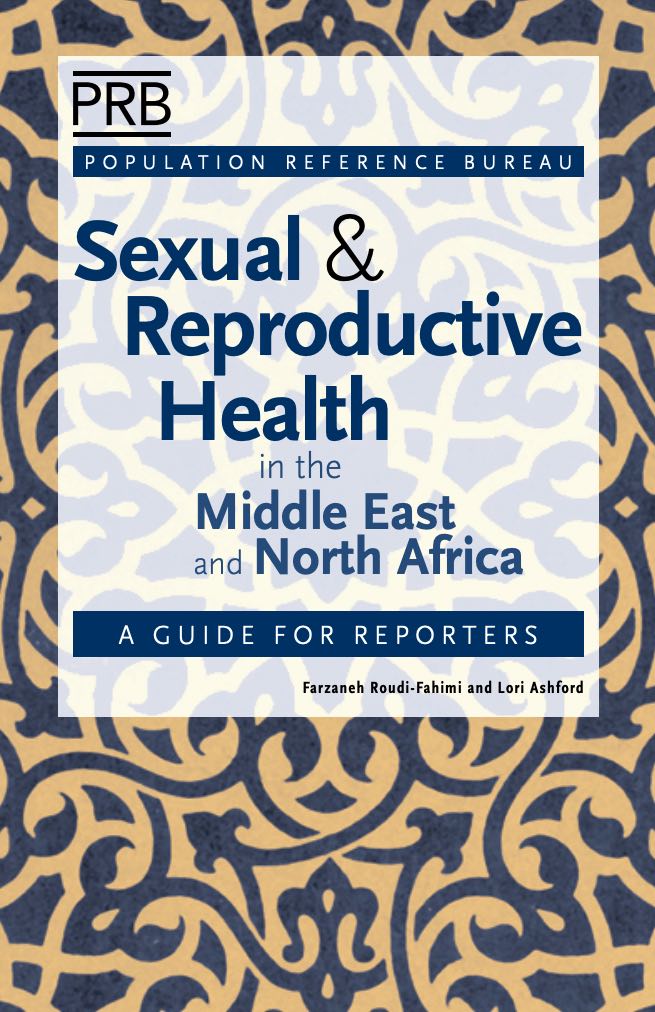
Sexual & Reproductive Health in the Middle East and North Africa: A Guide for Reporters
Product: Report
Author: PRB
Date: May 22, 2008
(May 2008) Sexual and reproductive health is a broad concept encompassing health and well-being in matters related to sexual relations, pregnancies, and births. It deals with the most intimate and private aspects of people’s lives, which can be difficult to write about or discuss publicly, particularly in the Middle East and North Africa (MENA).
Published by the Population Reference Bureau, Sexual & Reproductive Health in the Middle East and North Africa: A Guide for Reporters aims to bring together the latest available data on sexual and reproductive health for countries in the MENA region. It was written for journalists, to help them educate the public and make the case for policymakers that poor sexual and reproductive health contributes to social inequalities and hinders social and economic development.
“This is the first time that material on sexual and reproductive health has been put together in one, easy-to-read resource for the Middle East and North Africa,” noted Farzaneh Roudi-Fahimi, a co-author of the guide. “We hope that reporters, educators, and others will refer to it in their work and use it to expand the dialogue on these extremely important development topics.”
Cultural sensitivities and taboos surrounding sexuality are particularly pronounced in the MENA region, and make the role of the media vital in providing objective information about sexual and reproductive health matters. The media has the power to break the culture of silence that surrounds sexual and reproductive health, a silence that all too often prevents people from seeking information and care and prevents governments from putting the issues on their development agendas. Journalists can report responsibly and objectively on these issues to break taboos, educate the public, and bring the issues to policymakers’ attention.
The guide covers these topics: marriage, childbearing, family planning, maternal health, abortion, sexually transmitted infections and HIV/AIDS, adolescents and young adults, female genital cutting, and cervical cancer. There is also a chapter on health and development goals, as well as three appendices on population and reproductive health indicators by country, a glossary, and sources of information.
This guide was funded by the Ford Foundation office in Cairo.
Farzaneh Roudi-Fahimi is program director, Middle East and North Africa, at the Population Reference Bureau. Lori Ashford is program director, policy communications, at PRB.

 ">
">